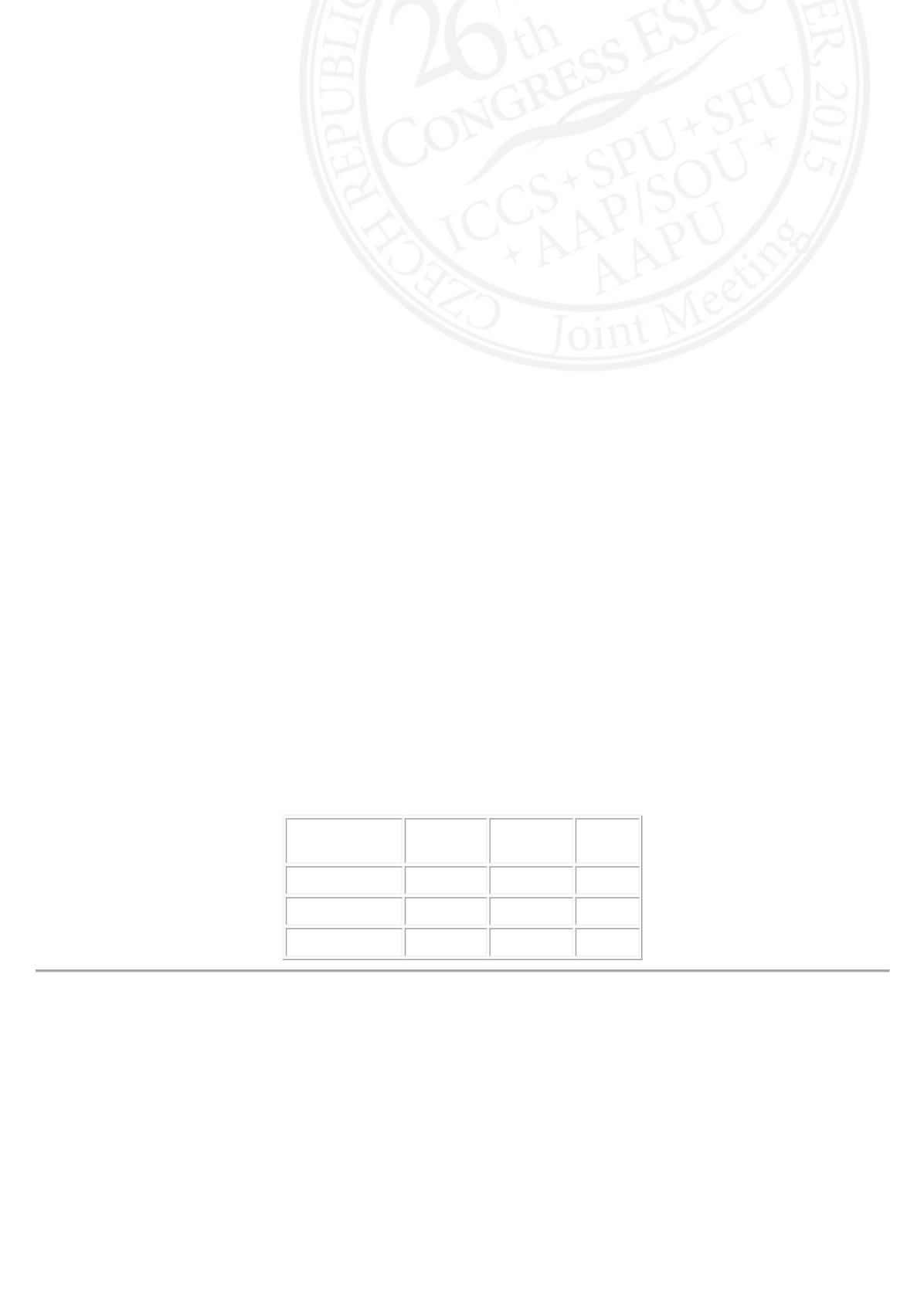

11:52 - 11:55
S8-4
(PP)
SUPRANORMAL RENAL FUNCTION IN CHILDREN WITH UPJO- WHAT DOES IT
REALLY MEAN?
Mandy RICKARD
1
, Jennifer D'CRUZ
2
, Armando LORENZO
3
, Carline BOZZATO
1
, Natasha BROWNRIGG
1
, Jorge DEMARIA
1
and Luis BRAGA
1
1) McMaster University - McMaster Children's Hospital, Department of Surgery / Urology, Hamilton, CANADA - 2)
McMaster University - McMaster Children's Hospital, McMaster Pediatric Surgery Research Collaborative, Hamilton,
CANADA - 3) The Hospital for Sick Children, Department of Surgery / Urology, Toronto, CANADA
PURPOSE
Renograms are routinely performed and indicated in children with high-grade hydronephrosis (HN) to rule out
obstruction. At times, the function of the affected kidney may be greater than the contralateral unaffected side. We
sought to determine if elevated function is indicative of true supranormal renal function (SNRF).
MATERIAL AND METHODS
Our prospectively collected pyeloplasty database (2008-15) was reviewed. A total of 126/135 (93%) patients had a
renogram pre-operatively and 23/126 patients (18%) were found to have SNRF (differential function ≥55%). Baseline
characteristics including pre and post-operative SFU grade and APD were measured. Of 126 patients, 48 (38%) had a
post-operative renogram allowing determination of loss or gain of ≥5% function. After excluding 2 patients with solitary
kidneys, a total of 46 patients were included in the analysis.
RESULTS
Baseline characteristics were similar in both the SNRF and non-SNRF groups including: mean age (months) at surgery
(49±54.2 and 53±60), time to surgery (months) (9.3±11.5 and 8.8±11.8), pre-operative APD (24.6±9mm and
28±10.9mm) and SFU grade (3.4±0.5 and 3.6±0.5). Mean pre-operative function was 62.5 ±13.7% in the SNRF group
and 44.7±8.8% in the non-SNRF group (p<0.01) compared to 56.7 ±14.4% and 43.9 ±13.9% post-operatively
(p<0.01). Table 1 outlines post-operative loss/gain of function in both groups. At last follow-up, HN resolved (SFU ≤2)
in 17(77%) with SNRF and 76(78%) of patients with non-SNRF (p=0.86).
CONCLUSIONS
Pre-operative SNRF does not appear to indicate true elevated function as two-thirds of these patients demonstrated a
decline of ≥5% post-operatively despite similar baseline grades of HN and time to surgery when compared to non-SNRF
patients
Table 1
SNRF
n=11 (%)
Non-SNRF
n=35 (%)
p Value
Decrease ≥5% 7(64)
2(6)
<0.01
Increase ≥5% 1(9)
8(23)
<0.4
No Change
3(27)
25(71)
<0.01












